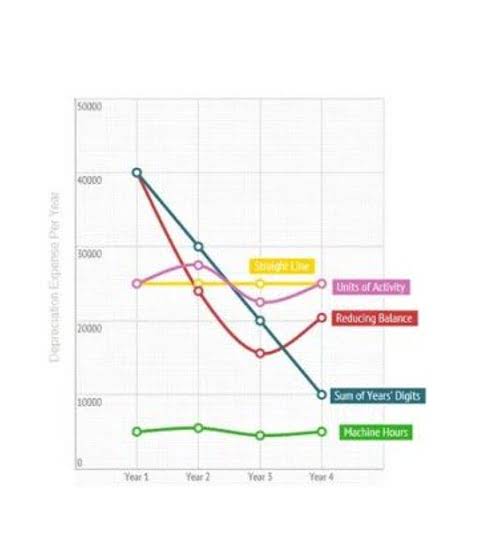The revenue and cost of goods sold (COGS) of each company is listed in the section below. To express the metric in percentage form, the resulting decimal value figure must be multiplied by 100. Get stock recommendations, portfolio guidance, and more from The Motley Fool’s premium services. This advisory service is geared toward wealthy individuals and their financial needs. You can also use websites like Stock Analysis to calculate this metric for you.

Net Profit to Gross Profit Ratio
The gross margin and the net margin, or net profit margin, are frequently used in tandem to provide a comprehensive look at a company’s financial health. This shows the company is improving its profitability and efficiency, retaining more money per each dollar of revenue generated. Moreover, gross margin can gross margin accounting help identify which products and services are most cost-effective and which areas need improvement. It can be used to (1) evaluate profitability, (2) help set pricing, and (3) make comparisons between peers. In general, the higher the gross margin, the more revenue a company retains per dollar generated.
Gross profit margin vs. net profit margin
The net profit margin is the percentage of net income generated from a company’s revenue. Net income is often referred to as the bottom line for a company or the net profit. A good way to reduce costs is by finding less expensive suppliers, or concentrating purchases with fewer suppliers, thereby achieving volume discounts.
How Gross Profit Margin Works
This means if she wants to be profitable for the year, all of her other costs must be less than $650,000. Conversely, Monica can also view the $650,000 as the amount of money that can be put toward other business expenses or expansion into new markets. Suppose we’re tasked with calculating the gross margin of three companies operating in the same industry. If retailers can get a big purchase discount when they buy their inventory from the manufacturer or wholesaler, their gross margin will be higher because their costs are down.
- You may use analytical tools, surveys, polls, and experiments to better understand your audience.
- Net earnings, which are presented as an absolute number, aren’t useful for comparison.
- Because these characteristics determine a company’s ability to pay investors a dividend, profitability is reflected in share price.
- Peloton is well-capitalized and in no danger of bankruptcy soon, but there are causes for concern.
- This can be used to make decisions related to production, pricing, efficiency, etc.
- It’s an important profitability measure that looks at a company’s gross profit as compared to its revenue.
Net profit includes gross profit (revenue minus cost of goods) while also subtracting operating expenses and all other expenses, such as interest paid on debt and taxes. In accounting, the gross margin refers to sales minus cost of goods sold. It is not necessarily profit as other expenses such as sales, administrative, and financial costs must be deducted. For example, a higher gross profit margin indicates that your business is financially sound and able to produce products and services efficiently and profitably. To find a company’s net margin, tally the cost of goods sold along with indirect operating expenses, interest expenses, and tax expenses. Combine all of these line items into a single metric called total expenses.
Gross profit margin, on the other hand, is this profit expressed as a percentage. High operating profits suggest the company has effective control of costs, or that sales are increasing faster than operating costs. This ratio is a rough measure of the operating leverage a company can achieve in the operational part of its business.
- These methods produce different percentages, yet both percentages are valid descriptions of the profit.
- These profit margins may also assist companies in creating pricing strategies for products or services.
- The cost and quality of raw materials can significantly impact the gross margin.
- Gross profit is a company’s total profit after deducting the cost of doing business, specifically its COGS, and is expressed as a dollar value.
- Rapid technological advancements can make certain products obsolete or less valuable.
When it comes to churn, you should aim for 5–7%, a percentage that appears to be the average among SaaS companies. Gross margin — also called gross profit margin or gross margin ratio — is a company’s sales minus its cost of goods sold (COGS), expressed as a percentage of sales. Put another way, gross margin is the percentage of a company’s revenue that it keeps after subtracting direct expenses such as labor and materials. The higher the gross margin, the more revenue a company has to cover other obligations — like taxes, interest on debt, and other expenses — and generate profit.
Do you already work with a financial advisor?

Weakness at these levels indicates that money is being lost on basic operations, leaving little revenue for debt repayments and taxes. The healthy gross and operating profit margins in the above example enabled Starbucks to maintain decent profits while still meeting all of its other financial obligations. Gross profit margins vary significantly across industries, so you can assess a good gross margin by looking at the normal range for small companies in your industry. New businesses often have a smaller gross profit margin but that does not mean that they aren’t financially healthy. Gross margin looks at total revenue and total cost of goods sold to determine how much profit a company retains after direct costs are subtracted.

Gross Margin: Definition and How to Calculate

You should aim for steady growth in your gross profit margin as your business gradually expands and you establish your customer base. Every successful business keeps its costs below revenue to generate profits. To calculate operating profit margin, subtract the cost of goods sold (COGS), operating expenses, depreciation, and amortization from total revenue.

